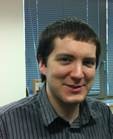Program Information
Mechanistic Modelling of the Relative Biological Effectiveness of Heavy Charged Particles
S McMahon1,2*, A McNamara1 , J Schuemann1 , K Prise2 , H Paganetti1 , (1) Massachusetts General Hospital, Boston, MA, (2) Queen's University, Belfast, Belfast, UK
Presentations
WE-H-BRA-7 (Wednesday, August 3, 2016) 4:30 PM - 6:00 PM Room: Ballroom A
Purpose
Uncertainty in the Relative Biological Effectiveness (RBE) of heavy charged particles compared to photons remains one of the major uncertainties in particle therapy. As RBEs depend strongly on clinical variables such as tissue type, dose, and radiation quality, more accurate individualised models are needed to fully optimise treatments.
Methods
We have developed a model of DNA damage and repair following X-ray irradiation in a number of settings, incorporating mechanistic descriptions of DNA repair pathways, geometric effects on DNA repair, cell cycle effects and cell death. Our model has previously been shown to accurately predict a range of biological endpoints including chromosome aberrations, mutations, and cell death. This model was combined with nanodosimetric models of individual ion tracks to calculate the additional probability of lethal damage forming within a single track. These lethal damage probabilities can be used to predict survival and RBE for cells irradiated with ions of different Linear Energy Transfer (LET).
Results
By combining the X-ray response model with nanodosimetry information, predictions of RBE can be made without cell-line specific fitting. The model’s RBE predictions were found to agree well with empirical proton RBE models (Mean absolute difference between models of 1.9% and 1.8% for cells with α/β ratios of 9 and 1.4, respectively, for LETs between 0 and 15 keV/μm). The model also accurately recovers the impact of high-LET carbon ion exposures, showing both the reduced efficacy of ions at extremely high LET, as well as the impact of defects in non-homologous end joining on RBE values in Chinese Hamster Ovary cells.
Conclusion
Our model is predicts RBE without the inclusion of empirical LET fitting parameters for a range of experimental conditions. This approach has the potential to deliver improved personalisation of particle therapy, with future developments allowing for the calculation of individualised RBEs.
Funding Support, Disclosures, and Conflict of Interest: SJM is supported by a Marie Curie International Outgoing Fellowship from the European Commission's FP7 program (EC FP7 MC-IOF-623630)
Contact Email:

